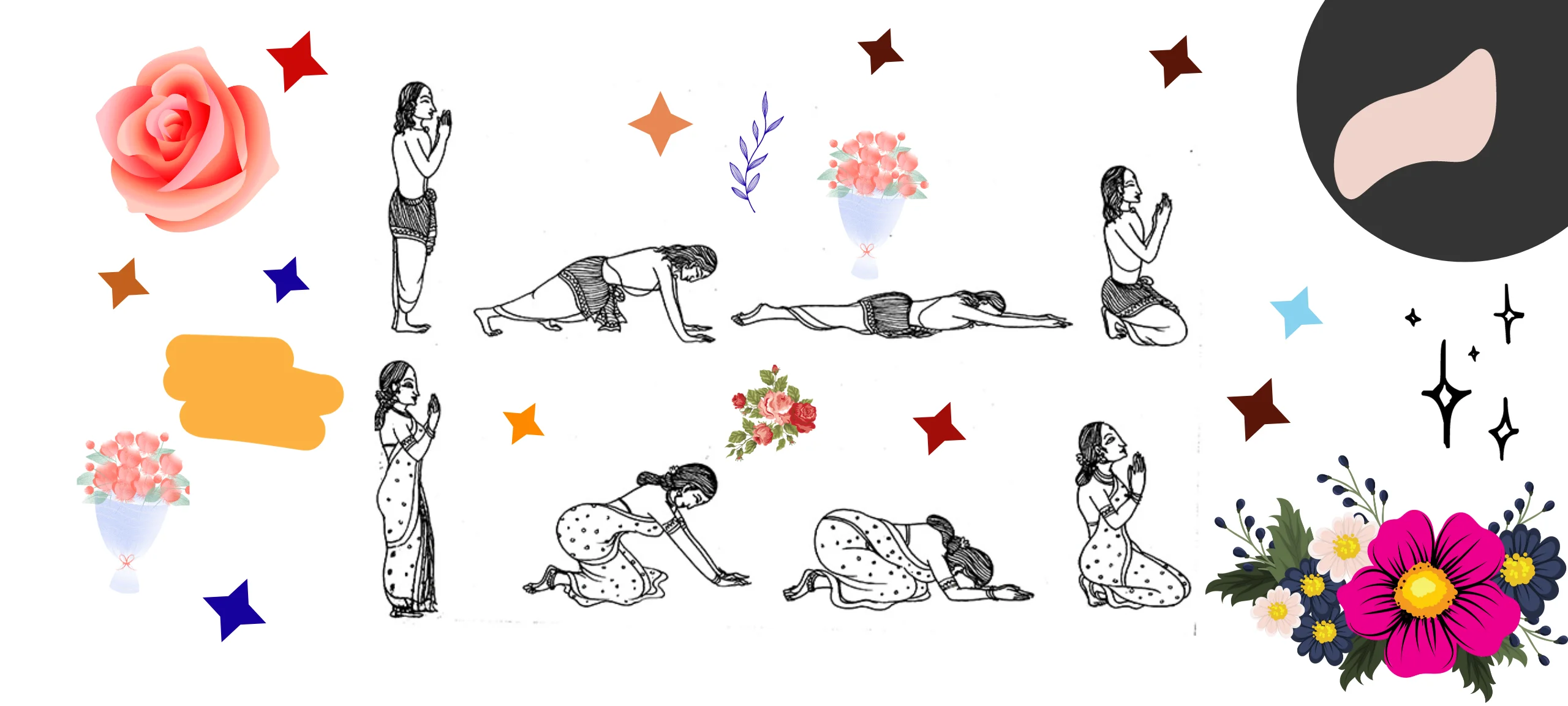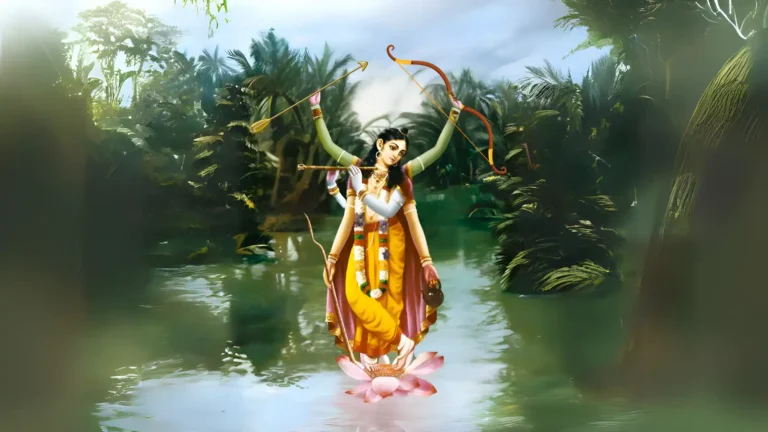Please Like the Blog and Share it for Maximum Reach
Table of Contents
What Qualifies As Bhakti?
The 4 Rasas literally point the mellows of pure Bhakti. A devotee is a being with unadulterated devotion towards the Lord And offers Service or Seva, expecting nothing in return. This is Bhakti.
The unadulterated mood of devotion may be inferred from the natural outburst of a devotee, with which the devotee communicates on a daily basis with the Lord. This is no imaginary and a whim, but is to be regarded as the language of the soul. Such soulful communion is verily Bhakti.
In Bhakti, the Bhakta or devotee has nothing to get from the world he sees with the naked eye nor does he expect anything from his Ishta.
He only loves and serves the Lord with all his heart just as a devoted wife, of earlier days, would serve her husband with single-pointed devotion.

The devotee in his truest form is ever subservient to the Supreme Lord. Bhakti is a manifestation of a devotee’s inner mood.
Bhakti can be at times be displayed on the gross platform through bhavas of higher order which point to the 4 Rasas and they cannot be confused with emotions born out of ignorance (as in Shajiyaism or erratic mood swings which may occur due to psychiatric disorders like bipolar mood disorder or Schizophrenia ).
Therefore, it is essential to gauge the intentions of people before exalting them as devotees (Bhaktas) as a revelation of their true intentions can disappoint many spiritual aspirants or onlookers.
4 Rasas: Characteristics of a Single-minded Devotee
Anything that is conducive to his devotional service is duly received with honor. Even a little help that a devotee receives is valued it with great esteem.
Such a devotee embraces with great love anything concerning the service of God.
He feels Viraha (longingness) to attain devotional service at the Lord’s feet.
A Bhakta displayes aversion to everything else that is not in consonance with the Lord. Displays great enthusiasm while hailing Lord’s glory. He maintains his body with the intention of it being a gift granted by the Lord.
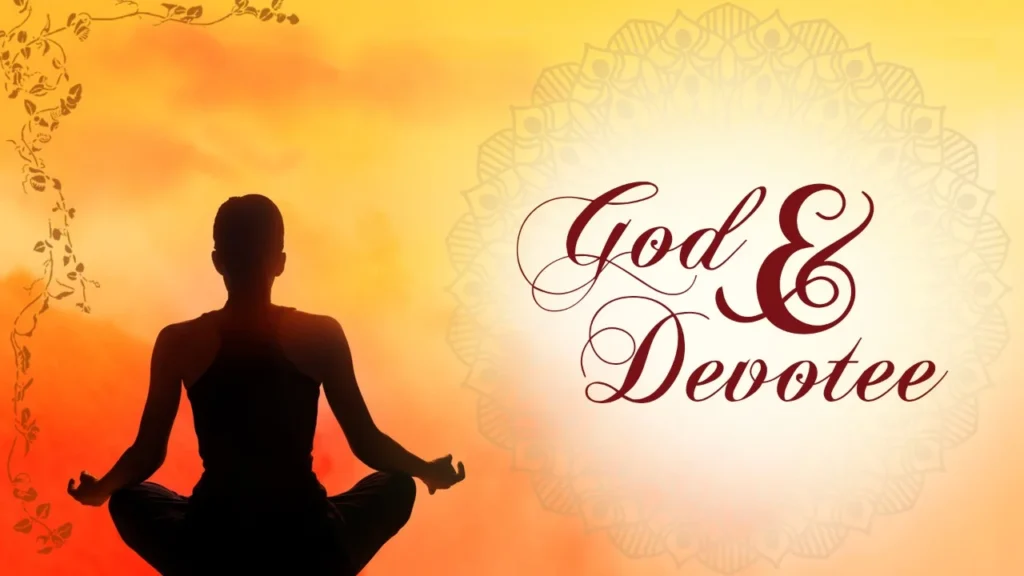
He witnesses the Lord’s presence everywhere and thus is grateful to Him as everything is His alone. He lives a life of utmost value for no moment his mood of devotion towards Bhagawan deters.
A true devotee has many other such qualities that elevate his position from that of other beings.
4 Rasas: 6 Qualities of a Devotee
1) Sammana
A devotee treats everybody with respect and accepts the humblest position of a sevaka. This forms the basis of the 4 Rasas discussed ahead.
Treating everybody with respect is an objective statement but when implementing it in real life it comes about as a subjective decision.
A devotee never entertains mundane talks. He tries avoiding discussions and at most does not attend such circles even on being invited for it. This is perceived as a harsh step by many people. But a Bhakta, respects privacy of both himself and other people.
By being absent in gatherings, a true Bhakta does not intend being rude but instead he maintains his devotion. This comes about as giving other people their space to continue their mundane talks as a materialistic man cannot tolerate a Bhakta and vice-versa stands equally true.
A devotee does not ever preach his faith system to unlike people. But, at the same time he does not appreciate other intruding his space.
Therefore, Sammana cannot be taken in the literal context which might otherwise be flattery. If devotees interact with people of opposing mindselts, then be rest assured that pure-devotion has not yet dawned.
2) Bahumana
True devotees resonate with like-minded devotees. As discussed earlier, a devotee is very particular about his association with people. This is another great aspect of the 4 Rasas discussed below.
Due to his sincerity, devotees of the same mind-set are drawn towards him and he gains an opportunity to serve.
Such events are God-arranged and thus he performs, with a pure heart all the required Seva to please pure devotees which in turn pleases the Lord. This mind set goes to say that Bhaktas perceive everything as a reciprocation of Bhagawan in return for his Bhakti and thus executing seva become his sadhana.
However strenuous the seva might be, he does not feel burdened.
3) Priti
Having love towards everything that reminds the Bhakta of Bhagawan.
Our Shastras say that don’t get attached to things and people as they are temporary, matter being their constituents. But, it is not easy to rid oneself of all attachment and hence the Shastras advice Priti. This creates the main juice of the 4 Rasas or Mellows.
‘Priti is attachment’ not to material but spiritual substance. Anything that inclines one towards God is spiritual.
Attaching oneself to spiritual contents like name of Bhagawan (like: Ram, Narayana, Krishna), form, Dham (like: Vrindavan, Ayodhya), scriptures (like: Bhagavatham, Ramayana, Mahabharata), and devotees are spiritual.

If we direct our emotions towards spiritual activities then our materialistic emotion which begun as attachment transforms into pure Bhakti.
Such a transformation is spiritual, where one only chants the glories of the Lord as he is constantly reminded of Him by the means of his action, association, etc. This is the time when he develops the first of the 4 Rasas.
Hence, the Shastras recommend that we look forward towards spiritualizing our environment (by taking up personal practices and not necessarily engaging with people to follow the same) to take our Sadhana to the next level.
You will find this video on the 4 Rasas very interesting.
4) Viraha
Feeling of extreme separation. This is an internal mood in which the Bhakta is eternally established until he unites with Bhagawan in the spiritual domain.
Viraha bhava at times is synonymously used with Gopi-Bhaav. But, it might not necessarily be so. The basis of Viraha can also be with respect to Dasya, Sakhya and Vatsalya Bhavas.
Test your Alignment with the Spiritual Subject Matter (only 7 Questions)
The scores generated in this Quiz are relative. There are no right or wrong answers. A percentage towards 100 indicates that you are more aligned to the overall subject matter.
What are the 4 Rasas?
The theme of the Viraha Bhaav differs from devotee to devotee based on the relationship he establishes with the Lord.
1) 4 Rasas: Madhurya Bhaav
It is extremely exalted and rare and most times cannot be imagined by people. It is Prem in its most concentrated form, devoid of the six-vices.
The gopis of Vrindavan are probably the first and last manifestations of this divine mood. Sriman Chaitanya Mahaprabhu also displayed Ashta-Sattvika bhaav which is Bhakti ras at the peak.
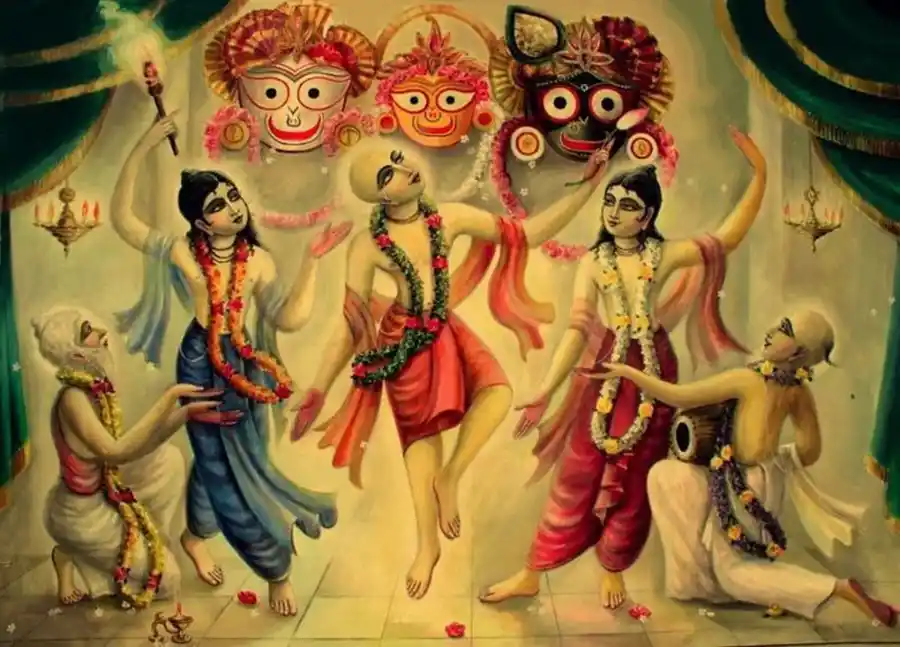
After these divine lilas of the Lord as Mahaprabhu and the gopis, earth has not witnessed any sadhaka displaying madhurya bhaav. Hence, this rasa is basically eternal in nature and cannot dawn in the minds of ordinary practitioners of Bhakti.
A person experiences the pangs of separation just like a fish feels when pulled out of water. Hence, with an impure mind, one can never boast of having attained the gopi bhaav.
2) 4 Rasas: Sakhya Bhaav
It is the mood of friendship with the Lord. However, there are variations in Sakhya rasa as seen in most pastimes of Lord Rama and his friends when compared to pure Sakhya Rasa which is only clearly distinguished in Krishna lila. Sri Rama descended on earth to establish Dharma and therefore, pure Sakhya rasa does not quite resonate with His characteristics.
Let us look at a few combinations of Sakhya with other Rasas.
Dasyam with Sakhya: As in case of Nishadraj and Lord Rama
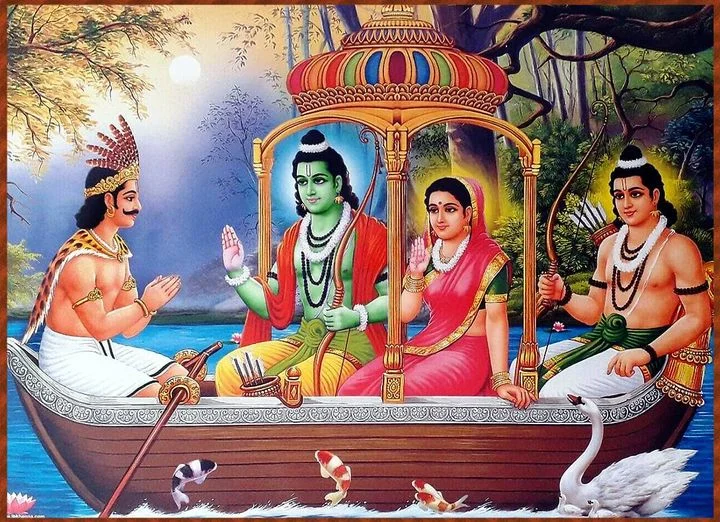
Aishwarya with Sakhya: As in case of Krishna and Arjuna. We get to see the latter combination in Ramayana as the pair of Lord Rama and King Vibheeshana,
Pure Sakhya: As in case of Gopas of Vrindavan and Lord Krishna. Viraha in this mood is just like the separation experienced by two close childhood friends.
3) 4 Rasas: Vatsalya Rasa
It is parental affection towards the Lord. In the transcendental pastimes Srimati Yashoda Devi and Nand Baba occupy their service as parenting their little Kanhaiya.
Here there is no other presiding mood except Vaatsalya as Yashoda Devi has no awe and reverence towards Krishna and so does Nanda Baba. They are purely concerned about His welfare, as they behold Him as nothing other than their son.
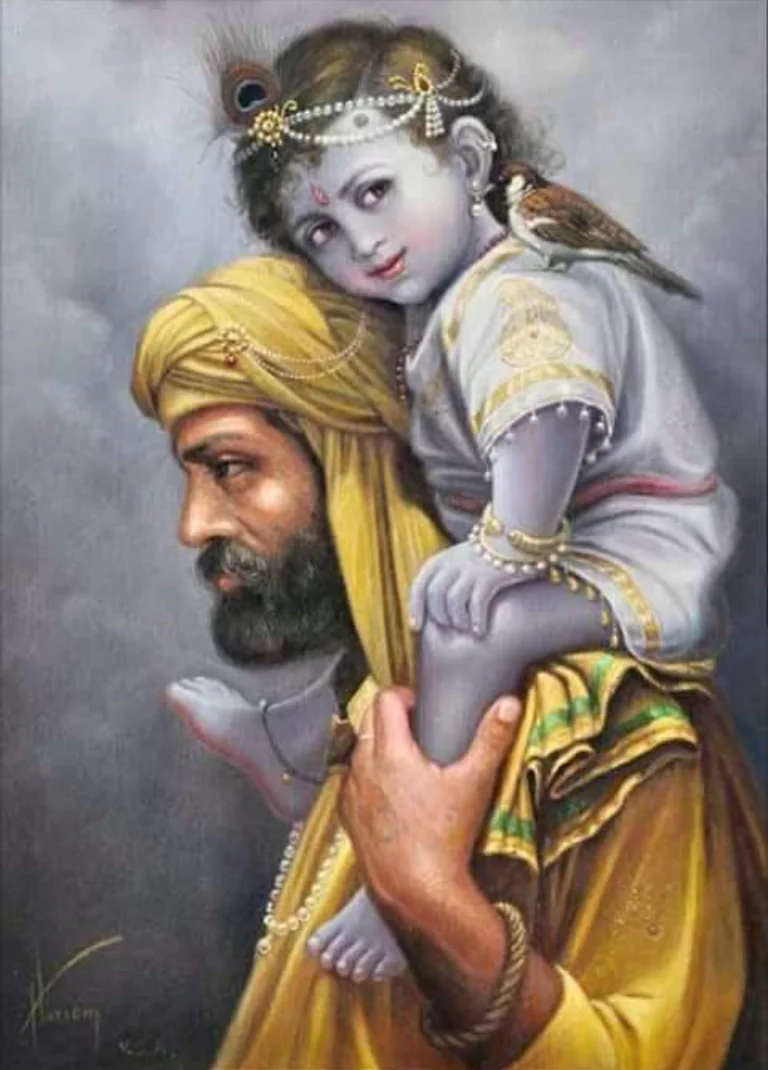
In the material world a reflection of this divine mood is visible in Sri Vallabha sampradaya or Pushti margam, a sub-tradition of Rudra Samradaya.
Ladoo Gopalji is the presiding deity and devotees accept parenting their Gopal as their eternal service. Viraha in this mood is experienced by a devotee just like a parent feels when separated from his/her child.
4) 4 Rasas: Dasya Rasa
This is the mood of a servitor. Serving the Lord is the prime, eternal seva of the Jiva established in this Ras. In Ramanaujacharya’s system or Sri Sampradaya this mood is also called Kainkaryam.

We have numerous example of such a devotion from our Vedic scriptures like the Dasya Bhava in Hanumanji towards Lord Rama, Garuda, Sudarshana towards Lord Vishnu, and Dasya bhaav of Sri Bharatha towards Lord Rama after returning to Ayodhya.
A devotee established in this mood experiences Viraha as a child (jiva) does when lost in a fair (material world). Therefore, a devotee engages in spiritual activities like reading scriptures (point 3) to keep in constant association with his internal mood.
Other Highlights of a Genuine Bhakta
He does not crave for salvation or Moksha. A Bhakta is driven by the motive of rendering service to Bhagawan. This is the summum bonnum of the 4 Rasas philosophy.
He does not desire Sayujya or merging with the form of Bhagawan. In Sayujya mukti the soul transcends experiences of happiness and sorrow. He is non-existent. But, a devotee derives joy and different mellows pervade his heart as he engages in comforting His master.
Currents of bliss pervade his body-mind-soul as he listens to Hari Katha.
He chants the glories of the Lord to establish himself in divinity, though at the moment he resides on the mundane plane.
A point to be noted is that exalted symptoms of a Bhakta are not necessarily external manifestations, through gestures and talks.
Many times, we find people wearing robes of a renunciant and common folks even regard them as one, but their actions do not resonate with their external attire. They invest in stocks (a modern-mechanism of gambling) which clearly violate the conduct of a Bhakta.
On the other hand a casually-dressed man constantly chants the name of the Lord in his mind and makes a living through prescribed means in the Shastras.
He does not get bombastic about his devotion and influence people.
In turn he prevents interacting with people as much as possible as he realizes that spirituality is a personal journey and not much of interaction can change a person. So, we cannot recognize a devotee merely by his outfit.
Please Like the Blog and Share it for Maximum Reach

